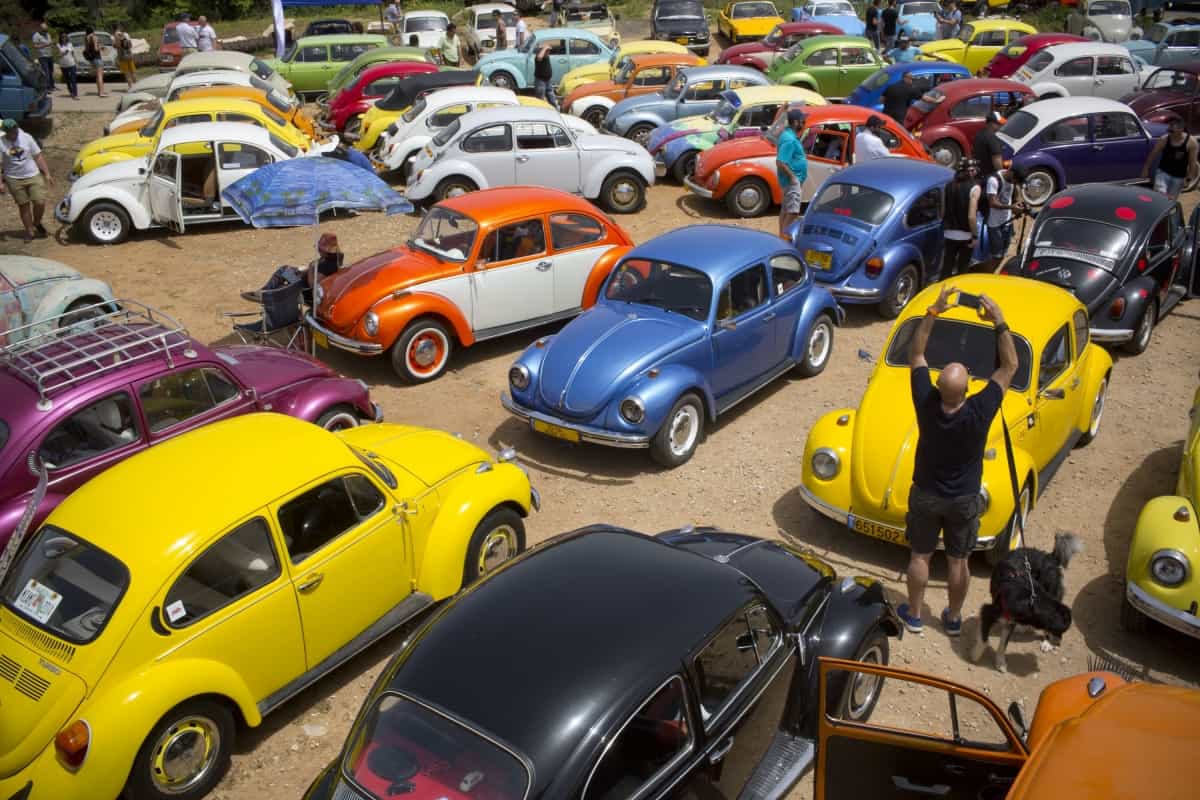
credit;PA
Volkswagen is halting production of the last version of its Beetle model this week at its plant in Puebla, Mexico.
It is the end of the road for a vehicle that has symbolised many things over a history spanning the eight decades since 1938.
The car has been a part of Germany’s darkest hours as a never-realised Nazi prestige project, and a symbol of Germany’s postwar economic renaissance and rising middle-class prosperity.
It was also an example of globalisation, sold and recognised all over the world, and an emblem of the 1960s counterculture in the United States.
Above all, the car remains a landmark in design, as recognisable as the Coca-Cola bottle.
The original design – a rounded silhouette with seating for four or five, nearly vertical windscreen and the air-cooled engine in the rear – can be traced back to Austrian engineer Ferdinand Porsche, who was hired to fulfil German dictator Adolf Hitler’s project for a “people’s car” that would spread car ownership the way the Ford Model T had in the US.
Aspects of the car bore similarities to the Tatra T97, made in Czechoslovakia in 1937, and to sketches by Hungarian engineer Bela Barenyi published in 1934.
Mass production of what was called the KdF-Wagen, based on the acronym of the Nazi labour organisation under whose auspices it was to be sold, was cancelled due to the Second World War.
Instead, the massive new plant in what was then countryside east of Hanover turned out military vehicles, using forced labourers from all over Europe under miserable conditions.
Relaunched as a civilian carmaker under supervision of the British occupation authorities, the Volkswagen factory was transferred in 1949 to the Germany government and the state of Lower Saxony, which still owns part of the company.
By 1955, the one millionth Beetle – officially called the Type 1 – had rolled off the assembly line in what was now the town of Wolfsburg.
The United States became Volkswagen’s most important single foreign market, peaking at 563,522 cars in 1968, or 40% of production.
Unconventional, sometimes humorous advertising from agency Doyle Dane Bernbach urged car buyers to “Think small.”
“Unlike in West Germany, where its low price, quality and durability stood for a new postwar normality, in the United States the Beetle’s characteristics lent it a profoundly unconventional air in a car culture dominated by size and showmanship,” wrote Bernhard Rieger in his 2013 history The People’s Car.
Production at Wolfsburg ended in 1978 as newer front-drive models such as the Golf took over.
But the Beetle was not dead yet.
Production went on in Mexico from 1967 until 2003 – longer than the car had been made in Germany.
Nicknamed the “vochito”, the car made itself at home as a rugged, Mexican-made “carro del pueblo”.
The New Beetle – a completely new retro version build on a modified Golf platform – resurrected some of the old Beetle’s cute, unconventional aura in 1998 under chief executive Ferdinand Piech, Ferdinand Porsche’s grandson.
In 2012, the Beetle’s design was made a bit sleeker.
The last of 5,961 Final Edition versions is heading to a museum after ceremonies in Puebla on July 10 to mark the end of production.